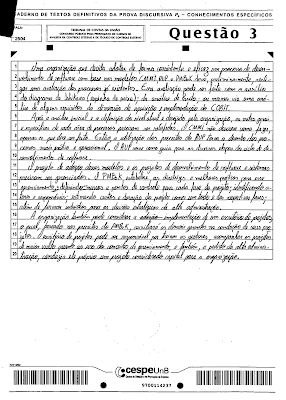BSC - I
Prólogo
The balanced scorecard (BSC) initially developed by Kaplan and Norton, is a performance management system that should allow enterprises to drive their strategies on measurement and follow-up. In recent years the BSC has been applied to information technology (IT) and currently the first real-life IT applications are starting to emerge. In this article, it is shown how the IT balanced scorecard (IT BSC) can be linked to the business balanced scorecard (BU BSC) and in this way support the IT/business governance and alignment processes.
Introdução
Kaplan and Norton (1992, 1993, 1996a, 1996b) have introduced the balanced scorecard at the enterprise level. Their basic idea is that the evaluation of an organization should not be restricted to a traditional financial evaluation but should be supplemented with measures concerning customer satisfaction, internal processes and the ability to innovate. These additional measures should assure future financial results and drive the organization towards its strategic goals while keeping all four perspectives in balance. They propose a three-layered structure for the four perspectives: mission (e.g., to become the customers’ most preferred supplier), objectives (e.g., to provide the customers with new products) and measures (e.g., percentage of turnover generated by new products). The balanced scorecard can be applied to the IT function and its processes as Gold (1992, 1994) and Willcocks (1995) have conceptually described and has been further developed by Van Grembergen and Van Bruggen (1997) and Van Grembergen and Timmerman (1998).
In this article, we illustrate how a cascade of scorecards can be instrumental in the IT/business governance processes and how this hierarchy of scorecards can support the alignment of business and IT strategy. The IT Development BSC and the IT Operational BSC are introduced as enablers for the Strategic BSC that in turn is the enabler of the Business BSC.
Figure 1 shows a standard IT balanced scorecard.
IT balanced scorecard
The User Orientation perspective represents the user evaluation of IT. The Operational Excellenceperspective represents the IT processes employed to develop and deliver the applications. The Future Orientation perspective represents the human and technology resources needed by IT to deliver its services. The Business Contribution perspective captures the business value of the IT investments.Each of these perspectives has to be translated into corresponding metrics and measures that assess the current situation. These assessments have to be repeated periodically and have to be confronted with goals that have to be set beforehand and with benchmarking figures. Very essential is that within an IT BSC the cause-and-effect relationships are established and the connections between the two types of measures, outcome measures and erformancedrivers, are clarified. A well built IT scorecard needs a good mixof these two types of measures. Outcome measures such as programmers’ productivity (e.g., number of function points per person per month) without performance drivers such as IT staff education (e.g., number of educational days per person per year) do not communicate how the outcomes are to be achieved. And performance drivers without outcome measures may lead to significant investment without a measurement whether this strategy is effective.These cause-and-effect relationships have to be defined throughout the whole scorecard (Figure 2): more and better education of IT staff (future perspective) is an enabler (performance driver) for a better quality of developed systems (operational excellence perspective) that in turn is an enablerfor increased user satisfaction (user perspective) that eventually must leadto a higher business value of IT (business contribution perspective).



Comentários